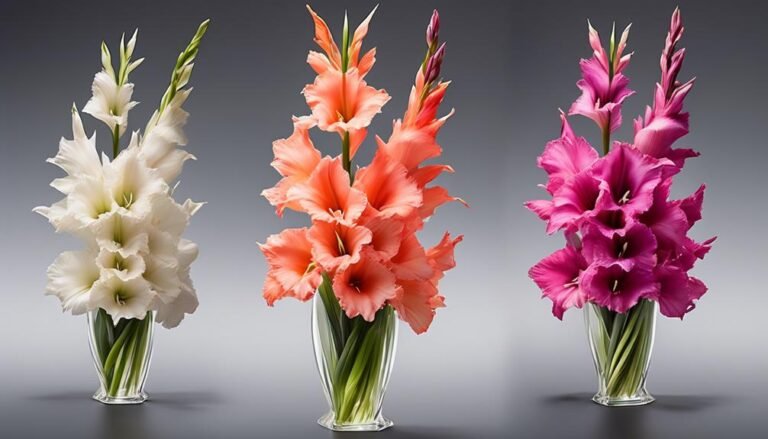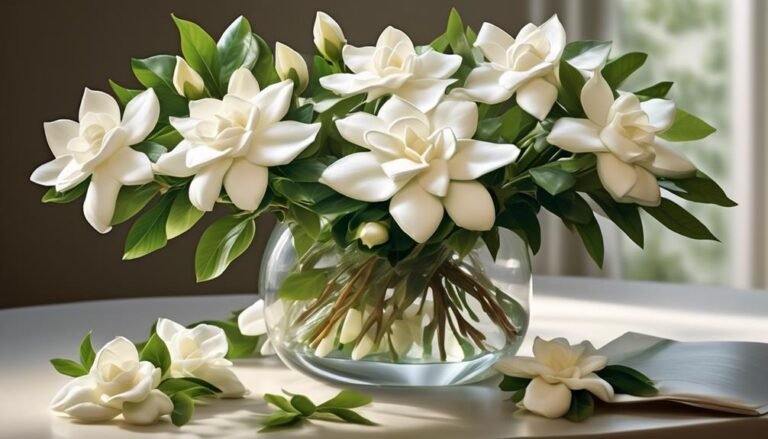Popular Types of Florist Flowers – Coneflower
The captivating allure of the coneflower, scientifically known as Echinacea, stems from its rich history and botanical significance. With a wide array of colors and varieties, each exuding its own distinct charm, the coneflower has become a staple in floral arrangements. Florists and enthusiasts alike are drawn to this beloved flower for its versatility, beauty, and unique characteristics.
- History of Coneflowers
Coneflowers, or Echinacea, have a rich history dating back to Native American medicinal uses. They were traditionally used to treat various ailments and were highly regarded for their healing properties. Today, coneflowers are still valued for their potential health benefits and are often used in herbal supplements and teas.
- Botanical Significance
Coneflowers are part of the daisy family and are known for their prominent raised center, resembling a cone. This distinctive feature gives them their name and sets them apart from other flowers. Their hardy nature and ability to thrive in various conditions make them a popular choice for both gardeners and florists.
- Versatility and Charm
One of the most appealing aspects of coneflowers is their versatility. They come in a wide range of colors, including shades of pink, purple, white, and orange, allowing for endless creative possibilities in floral arrangements. Their long-lasting blooms and attractive foliage make them a favorite choice for adding color and texture to bouquets and garden landscapes.
In conclusion, coneflowers hold a special place in the floral landscape due to their rich history, botanical significance, versatility, and charm. Whether used for their aesthetic appeal or potential health benefits, these beloved flowers continue to captivate and inspire florists and flower enthusiasts alike.
Scientific Name
Coneflowers, also known as purple coneflowers, belong to the Echinacea genus, derived from the Greek word 'echinos,' meaning hedgehog, in reference to the spiky central cone of the flower. These plants have been widely used in traditional medicine for their immune-boosting and anti-inflammatory properties. Native American tribes have utilized echinacea for centuries to treat infections and wounds.
In traditional medicine, echinacea has been used to alleviate symptoms of the common cold, flu, and respiratory infections. Its roots, flowers, and leaves are often used to create teas, tinctures, and extracts. The plant's purported ability to stimulate the immune system has made it a popular remedy in natural health practices.
Cultivating and propagating echinacea involves providing well-drained soil, ample sunlight, and consistent watering. It's a hardy perennial that's relatively easy to grow, making it a favorite among gardeners and herbal enthusiasts. The various species within the Echinacea genus offer different medicinal properties and physical characteristics, providing options for both ornamental and medicinal purposes. Some species are recognized for their vibrant purple or pink flowers, while others are sought after for their unique fragrance.
Background History
Coneflowers, also known as Echinacea, have a rich historical background deeply intertwined with traditional medicinal practices.
Native American tribes used coneflowers for treating colds, coughs, and sore throats. In the 19th century, coneflowers were integrated into Western herbal medicine, where they became valued for their therapeutic benefits.
Today, coneflowers aren't only valued for their medicinal properties but also for their ornamental beauty, making them a popular choice in gardens and landscapes.
Modern cultivation techniques aim to preserve their natural properties while enhancing their aesthetic appeal, reflecting the enduring cultural and botanical importance of coneflowers.
Physical Description

Coneflowers, with their rich historical background and ties to traditional medicinal practices, come in a stunning variety of colors and unique petal formations, making them a visually captivating addition to gardens and landscapes. These perennials are low-maintenance, thriving in well-drained soil and full sunlight, and are drought-tolerant and resistant to pests and diseases. They're also highly attractive to pollinators and beneficial insects, adding to their ecological value. Birds are known to feed on the seeds of coneflowers, making them a valuable addition to any wildlife garden.
Coneflowers come in a wide array of colors, from traditional purple to vibrant reds, oranges, and yellows. Their petal formations vary from gently drooping to lush, double-petaled blooms, and some varieties have shuttlecock-shaped flowers. Their unique characteristics include non-fading colors and striking bicolor combinations, making them an excellent choice for adding long-lasting beauty to your garden.
Colours and Characteristics
Coneflowers, also known as Echinacea, come in a variety of vibrant colors such as white, yellow, cream, red, pink, orange, and purple. They exhibit distinctive petal formations and captivating characteristics that make them a popular choice for gardeners and florists.
Here's what you need to know about these stunning flowers:
- Petal Formations: Coneflowers display a range of petal formations, from gently drooping petals with prominent cones to lush, double-petaled flowers. This diversity adds charm and versatility to floral arrangements.
- Color Varieties: These flowers are available in a wide array of colors, including traditional purple, vibrant red, pink, orange, creamy white, and sunny yellow. Some varieties even feature bicolor yellow and orange petals combined with deep red cones, offering ample opportunities for creative floral arrangements.
- Distinctive Varieties: Unique coneflower varieties like Sunrise, Razzmatazz, and Doubledecker stand out with their distinct colors and petal formations. They add interest and variety to bouquets and garden displays.
Consider the diverse colors and characteristics of coneflowers to create visually appealing floral arrangements that showcase the beauty of these stunning flowers.
Varieties Available

Coneflowers come in a wide variety of colors, petal formations, and growing conditions, making them versatile for different uses in landscapes.
Avalanche and Greenline coneflowers thrive in full sun or dappled shade, while White Swan and Avalanche coneflowers feature white flowers with green centers, perfect for borders, cutting gardens, or naturalizing in a meadow.
Cheyenne Spirit and Sombrero coneflowers offer a range of yellow, white, cream, red, pink, orange, or purple flowers, suitable for various aesthetic purposes.
Daydream coneflowers have gently drooping petals and prominent cones, making them a charming addition to any flower bed or container garden.
Double Scoop Cranberry coneflowers boast lush, double-petaled flowers, creating a show-stopping display in mixed perennial borders or cottage gardens.
Each variety has its own growing conditions and uses, allowing for strategic placement within your garden to ensure they thrive and contribute to the overall beauty of the landscape.
Seasonal Availability
Coneflowers, also known as Echinacea, are typically available during the spring and summer months when they bloom. Some varieties have specific peak seasons based on their unique growing requirements. Factors affecting availability include local climate conditions, geographic location, and specific variety characteristics.
Certain varieties of coneflowers may have specific peak seasons for availability based on their unique growing requirements. For example, some varieties may thrive in cooler spring temperatures while others may require the heat of mid-summer to bloom abundantly.
Availability of coneflowers can vary based on local climate conditions. Factors such as temperature, humidity, and precipitation can impact the growth and blooming patterns of coneflowers, affecting their seasonal availability.
Geographic location plays a significant role in the availability of coneflowers. Varieties that thrive in specific climate conditions may be more readily available in certain regions, while less common varieties may be harder to find in others.
It's essential to check with local florists or nurseries to determine the specific seasonal availability of coneflowers in your area. By understanding the factors that affect availability and the best time to plant coneflowers, you can ensure that you enjoy these beautiful flowers during their peak seasons.
Care Tips

Coneflowers, also known as Echinacea, thrive in well-draining soil and require full sun or dappled shade for optimal growth. Adequate sunlight is essential for robust flowering and overall plant vigor. Regular watering, especially during dry periods, is crucial, but be cautious of overwatering to prevent root rot.
Deadheading spent blooms is key to encouraging continuous flowering throughout the season. Fertilizing coneflowers with a balanced, slow-release fertilizer in the spring supports healthy growth and abundant blooms.
To prevent common problems like powdery mildew, ensure good air circulation around the plants and avoid overhead watering. For pest infestations, such as aphids or Japanese beetles, organic pest control methods like insecticidal soap or neem oil are effective without harming beneficial insects.
Dividing coneflower clumps every 2-3 years helps maintain plant vigor, prevents overcrowding, and promotes longevity in the garden.
Can Coneflowers Be Used in Floral Arrangements Like Sunflowers?
Yes, popular sunflower types of florist flowers like coneflowers can be used in floral arrangements. Their vibrant colors and unique shapes add a cheerful and lively touch to any bouquet. Coneflowers bring a fresh and modern twist to traditional sunflower arrangements, making them a popular choice among florists.
Conclusion
Coneflowers, also known as Echinacea, are a popular choice for florist flowers due to their vibrant blooms and appeal to pollinators. They come in a variety of colors and types, such as Avalanche, Greenline, Cheyenne Spirit, Daydream, and Double Scoop Cranberry, offering a diverse selection for floral arrangements.
Coneflowers are known for their seasonal availability and relatively easy care, making them a sought-after option for both florists and gardeners alike. These flowers aren't only visually appealing but also attract pollinators, adding a natural and vibrant touch to any floral arrangement.






